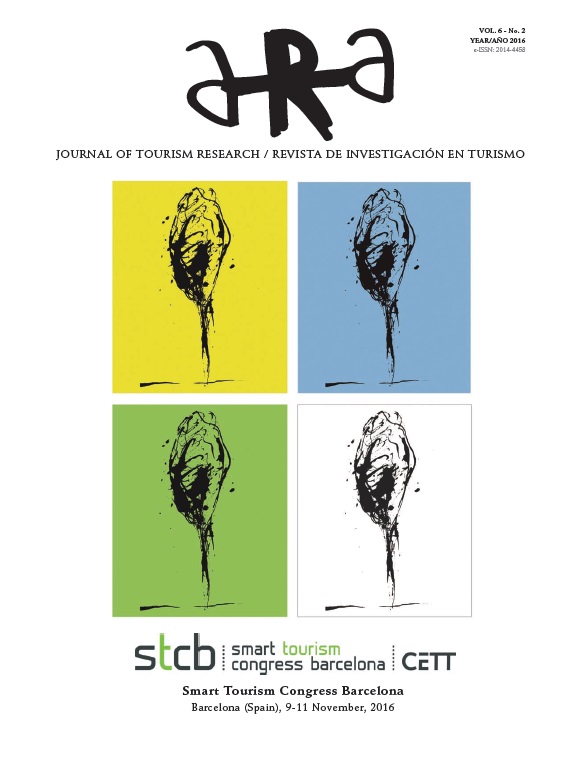The incidence of ICT in tourist destinations of the Spanish mountain. A case analysis
DOI:
https://doi.org/10.1344/ara.v6i2.19077Keywords:
Picos de Europa, Sierras de Cazorla, Segura y Las Villas, Sierra de Guadarrama, Spanish mountain, ICTAbstract
This communication has as main objective to assess the incidence of ICT in selected tourist destinations of the Spanish mountain (Picos de Europa, Sierras de Cazorla, Segura y Las Villas and Sierra de Guadarrama), and specifically: a) To know the level of application of ICTs in case studies in relation to product creation, information and promotion of destinations; B) to research the potential of new technologies (GPS, QR codes, augmented reality, apps, etc.) in the creation of new tourism products and the promotion of destinations; and c) to assess the contribution of ICTs to achieve more sustainable tourism practices.
The research has descriptive, evaluative and prospective purposes and therefore the methodological proposal is characterized by a multi-strategic design that integrates different procedures: review of documents and web pages, and discourse analysis.
The main results identify that although the destinations have progressed in the adoption of the ICT, they use it basically to provide information to users, while the rest of the tourist consumption phases are not yet well developed in the digital environment. The social networks have not yet acquired a central role as a tool for information and promotion of destinations. Thus, it is evident that there is still a long way to exploit ICT potential to mountain tourism.
Downloads
Published
How to Cite
Issue
Section
License
The authors who publish in ARA agree to the following terms:
- Authors retain copyright and grant the journal the right of first publication.
- Texts will be published under a Creative Commons Attribution License that allows others to share the work, provided they include an acknowledgement of the work’s authorship, its initial publication in this journal and the terms of the license.
- This material may not be used for commercial purposes.
- You may not distribute the modified material.
Attribution-NonCommercial-NoDerivatives 4.0 International (CC BY-NC-ND 4.0)














